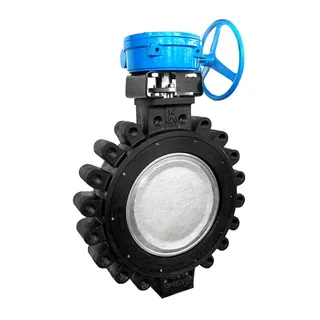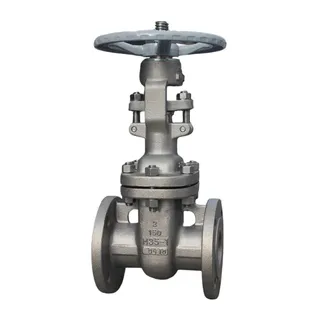In industrial production, steam systems play a crucial role, and steam traps are key components within these systems. They are not only the dividing point between the steam system and the condensate system, but also an important node to prevent steam leakage. If a steam trap leaks, it will not only result in huge energy waste, but may also affect the normal operation of the entire system. So, why do steam traps leak? This article will provide a detailed answer to this question and offer some effective preventive measures.
Before discussing the causes of steam trap leakage, we must first understand how to determine whether a steam trap is leaking. Typically, if the condensate discharge decreases, or if a large amount of steam leaks from the outlet of the steam trap, it indicates that the steam trap may need maintenance. Of course, this visual assessment is only applicable to open systems. In practical operation, we also need to distinguish between steam leakage and normal flash steam.
Secondary steam, also called flash steam, is a common phenomenon. When high-pressure saturated condensate is discharged into a low-pressure environment, because the "sensible heat" of low-pressure saturated condensate is lower, the condensate discharged by the steam trap with higher "sensible heat" will evaporate again in the low-pressure environment to absorb excess "sensible heat". This portion of secondary vaporized steam is called secondary steam. The proportion of secondary steam is related to the pressure difference before and after the condensate; the greater the pressure difference, the higher the proportion of secondary steam.
It should be noted that secondary steam usually contains water, thus appearing milky white. If there is a relatively long (more than 10 cm) transparent section of steam near the discharge port on the steam trap side, this may indicate that the steam trap is leaking fresh steam. In this case, the steam trap needs to be checked and repaired promptly.
Steam trap leakage is a key factor affecting the efficiency and energy utilization of steam systems. To effectively solve this problem, we need to understand the main causes of steam trap leakage. The following will discuss these causes in detail, so as to better implement targeted prevention and maintenance measures.
The main function of a steam trap is to separate and discharge condensate from the mixture of steam and condensate under high pressure, while preventing fresh steam leakage. To achieve this function, the steam trap must combine pressure (vessel) elements with precision mechanical components, and be able to operate under harsh conditions for a long time. Therefore, the steam trap must maintain sufficient strength and durability. However, the most common cause of steam trap leakage is the failure of the seal pair composed of the trap's valve core and seat.
There are many reasons for seal pair failure. First, the valve core and seat must be made of sufficiently high-quality materials and undergo proper heat treatment to strengthen the hardness and wear resistance of the seal pair. Otherwise, the high-speed two-phase flow can easily cause early failure due to erosion, scouring, cavitation, and other reasons. In addition, for thermostatic steam traps, the key components are temperature-sensing elements such as bellows or bimetals. The performance and durability of these traps largely depend on the quality of the sensing element. Corrosion resistance and welding stress of bellows, and fatigue resistance of bimetal sheets, are important considerations for leakage in such traps.
For mechanical steam traps, jamming of the mechanism is another important cause of leakage. For example, lever-operated float traps are more prone to leakage due to mechanism jamming compared to free float traps. Inverted bucket traps may also leak due to lever offset. Therefore, the internal design and assembly of the steam trap directly affect leakage.
Furthermore, mechanical traps have strict installation orientation requirements. Incorrect or inaccurate installation can also lead to leakage. If the trap is installed improperly, or the installation does not strictly follow the manufacturer's instructions, it may affect normal operation and result in leakage.
Steam trap leakage is sometimes related to oversizing. Oversized traps not only reduce their service life, but also cause frequent opening and long-term micro-opening, leading to excessive wear. In addition, since the designed leakage rate of a steam trap is based on its full discharge capacity, actual operating leakage may be higher. Therefore, when selecting a steam trap, it is essential to consider the system's operating pressure, temperature, and condensate load to ensure it can handle condensate effectively and prevent steam leakage.
Leakage of steam traps is also closely related to their structural form. For example, double-seat traps have a much higher leakage rate than single-seat traps, and only mechanically sealed traps are more prone to leakage. Therefore, when selecting a steam trap, the appropriate structural form should be chosen according to actual needs to reduce leakage risk.
If welding slag and other impurities are not properly handled after pipe and steam trap installation, it can cause steam trap leakage. Newly installed pipelines should be thoroughly cleaned, and filters should be regularly cleaned to remove scale and impurities generated during initial operation. According to Watt energy-saving practice, during the first month of operation, cleaning should be done weekly; from one to three months after operation, cleaning should be done monthly; afterward, cleaning should be done every six months. These measures are crucial to prevent steam trap leakage.
Sometimes, in the application of siphon traps, a portion of steam may be intentionally released due to concern over air locks. However, this practice is not advisable. If the steam trap is undersized or during start-stop operations, workers habitually open the trap bypass, and operational errors (forgetting to close) or leakage (incomplete closure) of the bypass valve are common causes of steam trap leakage. Therefore, workers must be properly trained to correctly operate the steam trap and its bypass valve, avoiding leakage due to operational mistakes.
Oversized thermodynamic traps, or traps operating in low-temperature, high-wind, rainy, or humid environments, may act too frequently, increasing wear, significantly reducing service life, and causing high leakage rates. Therefore, environmental factors must be fully considered when selecting and installing traps, and the appropriate trap type and model should be chosen.
After understanding the main causes of steam trap leakage, we need to know how to detect it. Timely and accurate detection of leakage points is key to ensuring efficient steam system operation and energy savings.
Visual Inspection: Observe the appearance of the steam trap for damage or dirt, and check whether the valve opens and closes normally. This method is simple and intuitive, but may not detect all leakage points.
Temperature Detection: Use an infrared thermal imager or temperature sensor to detect temperature changes around the trap. If the trap leaks, there will usually be abnormal temperatures near the leakage point. This method can quickly locate leakage points and improve detection efficiency.
Sound and Vibration Detection: A properly working steam trap emits specific sounds and vibrations. When the trap malfunctions, these patterns change. Using a stethoscope or ultrasonic detection equipment, these changes can be identified to determine if the trap leaks. Ultrasonic detection is a non-intrusive method that can detect minor leaks, particularly effective in hard-to-reach areas.
Now that we understand the causes and detection methods of trap leakage, we need to explore how to effectively prevent it. Proper preventive measures not only extend the trap's service life, but also significantly improve the efficiency of the steam system and energy utilization.
Regular Maintenance and Inspection: Regularly maintain and inspect traps, including cleaning, checking the wear of sealing gaskets, and inspecting internal parts for damage, can effectively prevent leakage. Develop a reasonable maintenance plan based on the system's actual operating conditions to ensure the trap remains in good working condition.
Proper Selection and Installation: Choose the appropriate trap based on system pressure, temperature, and condensate load to ensure it handles condensate effectively and prevents steam leakage. Install filters before the trap to prevent pipe impurities from entering, causing blockage and leakage. Ensure traps are installed according to manufacturer instructions and regularly maintained.
Use High-Quality Materials: Selecting traps made of high-quality materials improves durability and corrosion resistance, reducing the risk of leakage. High-quality materials also extend the trap's service life and enhance performance under harsh conditions.
Reasonable Layout and Installation: Avoid using a single trap to discharge condensate from multiple devices, as this can cause system water accumulation and premature failure. Install traps below the outlet of steam-using equipment, and ensure correct installation orientation to prevent wear, failure, and steam leakage.
Steam traps play a vital role in industrial production. However, trap leakage not only wastes energy but may also affect system operation. Therefore, understanding the causes of leakage and taking effective preventive measures is crucial for improving energy efficiency and ensuring safe system operation. Through regular maintenance and inspection, proper selection and installation, use of high-quality materials, modern monitoring and diagnostic tools, and reasonable layout, we can effectively prevent steam trap leakage and ensure efficient operation of the steam system.



